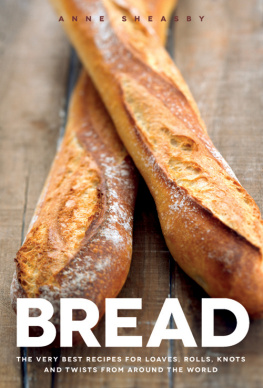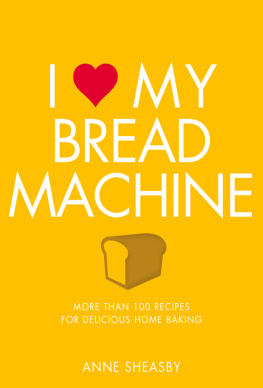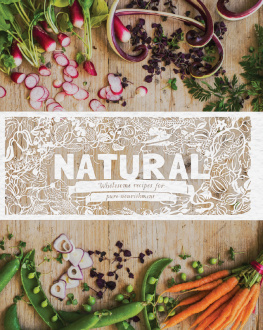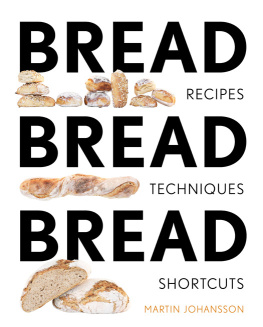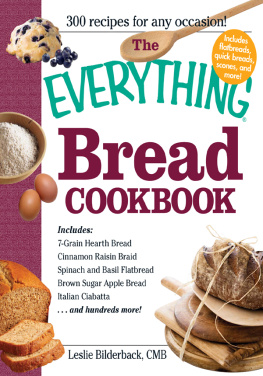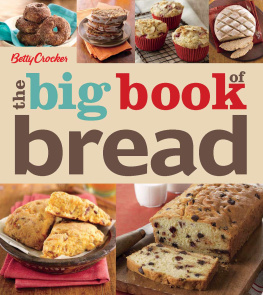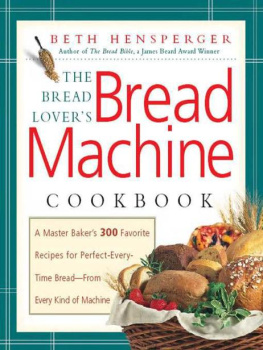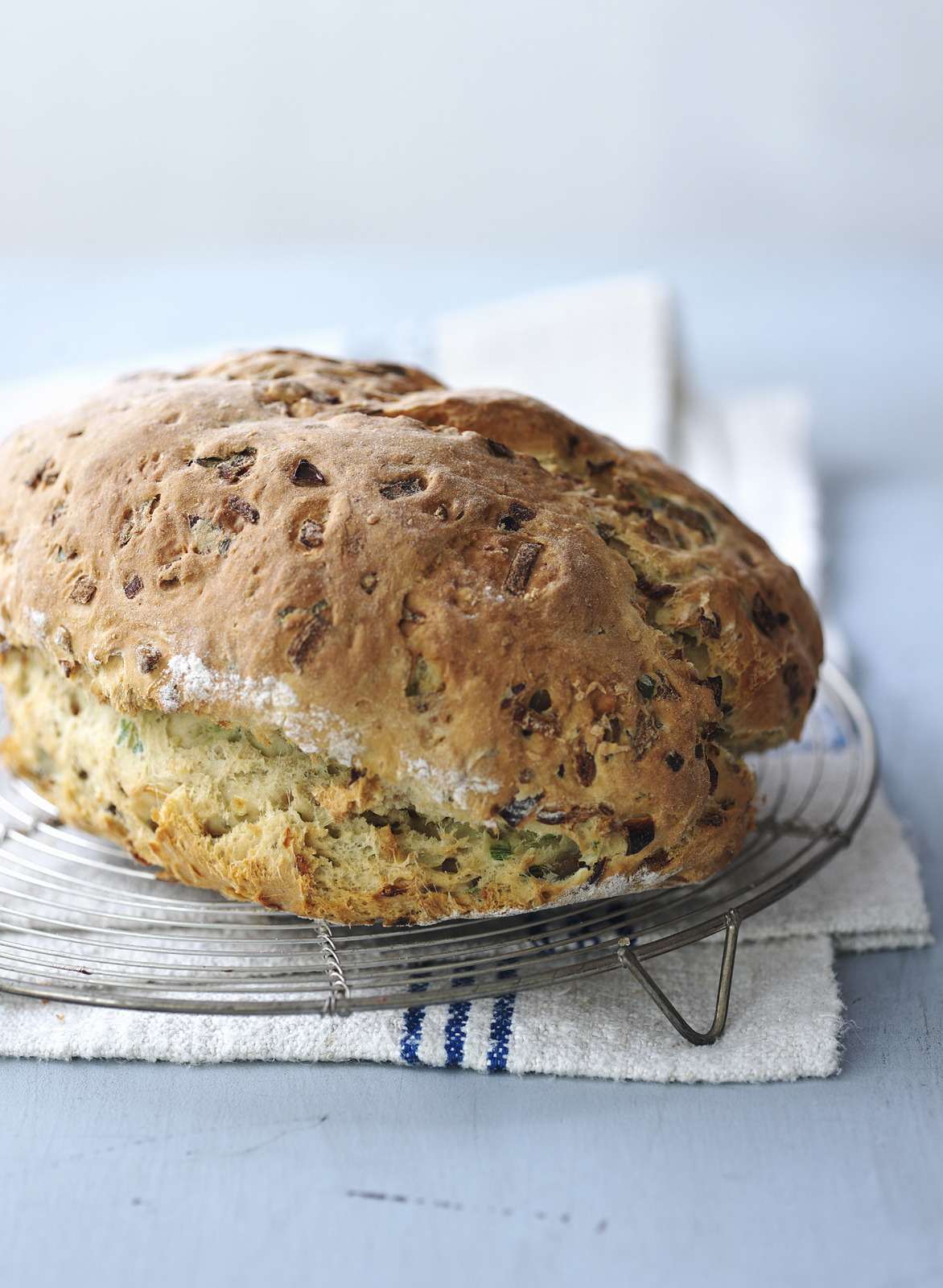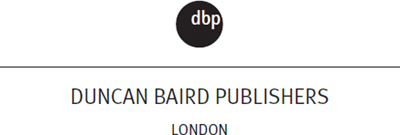BREAD
BREAD
THE VERY BEST RECIPES FOR LOAVES, ROLLS, KNOTS AND TWISTS FROM AROUND THE WORLD
ANNE SHEASBY
Contents
Bread basics
Types of bread
Bread comes in all shapes, sizes, colours, textures and flavours and few things beat the aroma of freshly baked bread filling your home. Baking does not have to be time consuming or complicated; by mastering the basic technique of breadmaking, there are endless ways to experiment with recipes and to create delicious home-made breads, from everyday loaves and quick breads to enriched speciality breads, flat breads and gluten-free breads. Plus, the increasing popularity of breadmachines provides the home baker with many additional recipes and ideas.
Basic ingredients for breadmaking
Bread has four essential ingredients: flour, yeast, liquid and salt. Other ingredients such as sugar, fat and eggs may be added to produce different types of bread.
Flour
Types of flour
For traditional yeasted breads, choose strong wheat flour, also known as breadmaking flour or bread flour. It is available in several varieties, the most common being white, brown, wholemeal, granary and soft grain white. Strong or bread flour has a high gluten content, which stretches the dough and traps in air as it cooks, to give a well-shaped loaf with a good rise and a light, open texture.
Strong flour is recommended for use when making bread by hand and also when making bread in a breadmachine. Flours vary between brands but choose organic, unbleached strong flour, if possible. Plain or self-raising flours should only be used in yeast-free breads (although some yeasted doughs use a mixture of flours, such as French Baguettes), and all of the quick bread recipes in this book are made using these types of flour. Quick breads tend to have a closer, more crumbly texture.
Breads made with strong wholemeal flour may take a little longer to rise than those made with white flour, as the bran in wholemeal flour inhibits the gluten. They also tend to be slightly denser and coarser in texture than white breads, though they are very flavourful and nutritious. An alternative idea is to use half strong white and half strong wholemeal flour for a lighter-textured loaf.
Strong brown flour will produce a lighter brown loaf, whereas strong granary or malthouse flour, which is a mixture of strong brown flour and malted wheat flakes or grains, produces loaves with a nutty, malted flavour. Strong granary flour may also be made from a combination of strong wholemeal and white flours, sometimes with rye flour added, and malted wheat grains. Stoneground flour (available in wholemeal and brown varieties) is ground between stones, hence the name, and this gives the flour a slightly roasted, nutty flavour. Strong soft grain flour is strong white flour with kibbled grains of wheat and rye added, and this also produces a tasty loaf.
Other flours such as barley, millet and spelt flours have a low gluten content, but can be combined with strong bread flours to make delicious loaves. Rye flour is also used in breadmaking and although it has a good gluten content, rye doughs are often sticky and difficult to handle, so for this reason it is frequently mixed with other flours to create a more manageable dough.
Gluten-free flours
If you have an intolerance or sensitivity to gluten, then you will need to avoid flours which contain gluten. Because gluten is the protein that strengthens and binds dough in baking, you may need to find alternative binding agents when using gluten-free flours. A combination of starches often works better than a single type, and adding ingredients such as egg, grated apple or mashed banana may also help. It should be noted that gluten-free flours tend to make denser loaves with a closer texture.
A range of gluten-free flours including gluten-free white and bread flours (as well as gluten-free plain flour) are available from many supermarkets or health food stores. Alternatively, you can combine a selection of gluten-free flours yourself. Other naturally gluten-free flours include rice flour, gram (chickpea) flour, buckwheat flour, cornmeal or maize meal flour, tapioca flour and potato flour.
When using gluten-free flours in recipes, it is important to remember that they tend to absorb more liquid than ordinary flours, so you may need to add a little more liquid to all your recipes (we have accounted for this in the recipes in this book), if you are adapting/changing standard recipes into gluten-free recipes.
It is important to remember when making bread by hand or using a breadmachine, that all utensils should be washed thoroughly before and after use, as even the slightest trace of wheat may cause an allergic reaction in someone who suffers with coeliac disease or who has an intolerance to wheat. If you are baking a batch of breads, be careful to keep ingredients separate so that there is no risk of wheat flour contaminating the gluten-free foods. If you do a lot of gluten-free baking, it may be sensible to always use separate baking tins and cooking utensils.
Gluten-free bread mixes are also available from health food shops, and these are suitable for making bread by hand or in the breadmachine. We used Orgrans Easy-Bake Gluten-Free Bread Mix (available in health food shops) for a couple of the recipes in the Gluten-Free Breads chapter.
For all the gluten-free recipes in this book (where applicable), we used Doves Farm range of gluten-free flours (readily available in supermarkets and health food shops), which includes gluten-free plain white flour, gluten-free white bread flour and gluten-free brown bread flour. These all gave excellent results. Some recipes also contain gluten-free self-raising white flour if this is not available, simply use gluten-free plain white flour and add 1 teaspoon gluten-free baking powder to each 225g (8oz) of plain flour used. Other brands of gluten-free flours are also available.
Yeast
Yeast is an essential ingredient in breadmaking as it causes the bread to rise. It is a living organism, which requires food and moisture to grow and survive. Fresh yeast is alive but inactive when you buy it, and it will only become active once it is mixed with a warm liquid such as milk or water. Dried yeast is also inactive and it will remain so until it becomes activated during the process of fermentation.
Yeast feeds on the sugar and later the starches in the flour and it then releases a gas (carbon dioxide) that makes dough rise. Warmth encourages the yeast to grow more quickly, but it is not essential. Bread dough will rise in a refrigerator overnight and this slow, cool rise produces a good, well-shaped loaf.
Types of yeast
Yeast is available in several different forms including fresh yeast, traditional or ordinary dried active yeast, and easy-blend, easy-bake, quick or fast-action dried yeast. All forms of yeast can be used and interchanged in the recipes, so long as the general guidelines are followed. It is important to treat yeast with care. As soon as it comes into contact with moisture of any kind it will activate and start to feed on the starch and sugars in the dough.
Easy-Blend (Easy-Bake) or Fast-Action (Quick) Dried Yeast Easy-blend (easy-bake) or fast-action (quick) dried yeast is a combination of dried yeast and the bread improver ascorbic acid (vitamin C), which accelerates the action of the yeast during the fermentation process, allowing a quick rise and eliminating the need to knock back the dough and rise it for a second time. This type of yeast is available in handy 6g or 7g (oz) sachets, or it can be bought in resealable foil packets of 125g (4oz), which need to be kept in the refrigerator once opened and used within 1012 weeks. Easy-blend (easy-bake) or fast-action (quick) dried yeast is sprinkled and mixed directly into the flour or dry ingredients, before adding the warm liquid to make the dough. It is a fast-action yeast, so that often only one kneading and proving (rising) is required, making yeast cookery quicker and easier. It is important to remember that yeast wont work if it is stale, so always follow instructions for storage and adhere to the use-by date on the packet. This type of yeast is recommended for use in a breadmachine.
Next page
